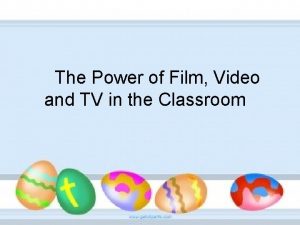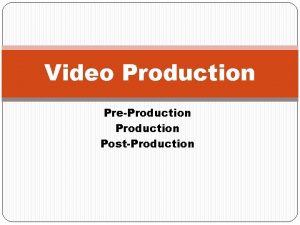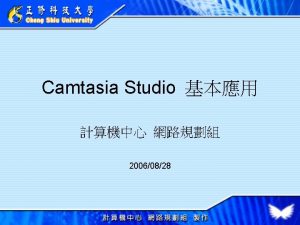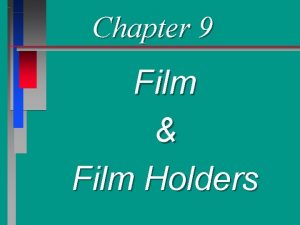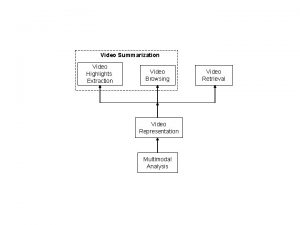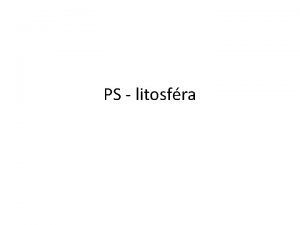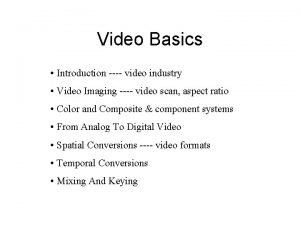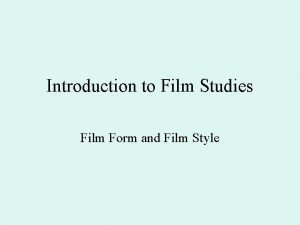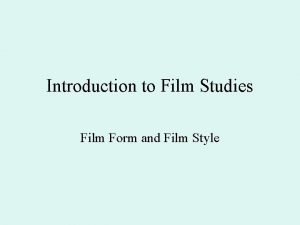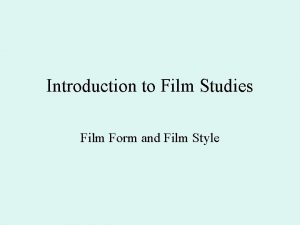The Power of Film Video and TV in













- Slides: 13

The Power of Film, Video and TV in the Classroom

Educational Video Using audio-visual materials in the classroom is nothing new. Educators have recognized the power of audio-visual material to capture the attention of the learners,

Teacher who report using TV or video for two or more hours per week, two-thirds find that student learn more when TV or video is used, and close to 70% find that student motivation increases. • Reinforces reading and lecture material • Aids in the development of a common base of knowledge among student

• Enhances student comprehension and discussion • Provides greater accommodation of diverse learning style • Increases student motivation and enthusiasm • Promotes teacher effectiveness

How does video promote learning? Television and video viewing is a passive activity in which viewer are only superficially reactive to what they are watching and one that will, over time, hamper or displace academic achievement.

Motivation and affective learning One of the greatest strengths of television and video is the ability to communicate with viewers on an emotional, as well as a cognitive, level. This ability is to reach viewers emotions, video can have a strong positive effect on both motivation and affective learning.

Selecting Video Content Selecting effective video is an essential component of integrating this medium into practice and realizing the promise of multimedia in the classroom. Selecting video that has strong, visually-rich educational content is a critical element for maximizing the effectiveness of the video

• Variation in the presentation • Humor • Age-appropriate narration and developmentally-appropriate thinking skills • Chunking, or organization in section • Provision of meaningful examples • Posing of open-ended questions • Opportunities for extension

Prepare the Classroom • Darken the room. • Student should not be seated too near nor too far.

Pre-viewing activities • • • Set goals and expectations. Link the TV lesson to the past lesson. Set rules while viewing. Put the film in context. Point out the key they need to focus on.

Viewing • Don’t interrupt while viewing. • Just make sure sights and sounds are clear.

Post-viewing To make them feel at ease begin by asking the following questions: 1. What do you like best in the film? 2. What part of the film makes you wonder? 3. Does the film remind you of something or someone?

Reference http: //www. libraryvideo. com/articles/article 26. asp http: //wik. ed. uiuc. edu/index. php/Video_in History_ Classes
 Television promotes gre
Television promotes gre Wedge film journal bearing
Wedge film journal bearing Pre production planning for video film and multimedia
Pre production planning for video film and multimedia Real power and reactive power
Real power and reactive power Yandex ru video search text
Yandex ru video search text Gravity yahoo
Gravity yahoo Video.search.yahoo.com
Video.search.yahoo.com The frame size of a video refers to the video’s
The frame size of a video refers to the video’s Power point codec
Power point codec Hát kết hợp bộ gõ cơ thể
Hát kết hợp bộ gõ cơ thể Bổ thể
Bổ thể Tỉ lệ cơ thể trẻ em
Tỉ lệ cơ thể trẻ em Voi kéo gỗ như thế nào
Voi kéo gỗ như thế nào
